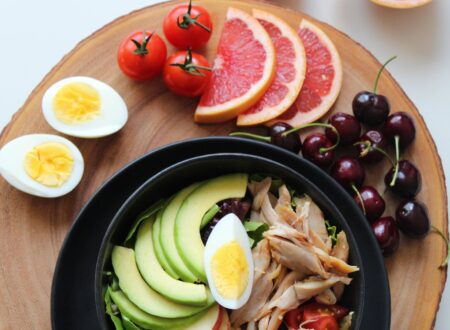Introduction to Flavor Pairing
Flavor is a fascinating world where science and creativity collide. Every dish tells a story, driven by the vibrant notes of various ingredients coming together harmoniously. Whether you’re an aspiring chef or just someone who loves to explore new tastes in their kitchen, understanding flavor pairing can elevate your culinary creations beyond your wildest dreams.
Imagine biting into a perfectly ripe mango paired with spicy chili flakes—it’s that unexpected burst of sweetness and heat that brings joy to your palate. This dance of flavors sparks curiosity and invites experimentation. But what really lies behind the magic? Let’s dive deeper into the art and science of flavor pairing, unlocking secrets that can transform any meal into an extraordinary experience.
The Basics of Taste and Flavor
Taste and flavor are often used interchangeably, but they are distinct concepts. Taste refers to the basic sensations detected by our taste buds: sweet, salty, sour, bitter, and umami. These elements create a foundation for how we perceive food.
Flavor encompasses not only taste but also aroma and mouthfeel. It’s a complex interplay of various sensory inputs that create the overall experience of eating. When you take a bite of an apple, your brain processes sweetness from taste while simultaneously detecting fruity aromas through smell.
Temperature and texture further influence flavor perception. A warm slice of pizza feels different than one that’s cold; each state can trigger varied responses in your palate. Understanding these basics is essential for anyone looking to elevate their culinary creations.
The science behind taste receptors adds another layer to this rich tapestry of flavors we encounter daily. Each individual has unique sensitivities that shape personal preferences too.
Understanding Complementary and Contrasting Flavors
Complementary flavors work harmoniously together. Think of chocolate and peanut butter. Each enhances the other’s richness, creating a delightful experience. When you combine ingredients that share similar profiles, they balance beautifully.
On the other hand, contrasting flavors create excitement on the palate. Consider sweet and salty combinations like caramel drizzled over popcorn. The tension between these opposing tastes can elevate a dish to new heights.
Texture plays an important role too. A creamy sauce paired with crunchy vegetables offers both flavor and mouthfeel diversity. It’s not just about taste; it’s about creating layers in every bite.
Experimenting with complementary and contrasting elements opens up endless possibilities in cooking. Whether you’re crafting a savory dish or baking a treat, understanding these concepts is key to elevating your culinary creations.
Commonly Used Flavor Pairings in Cooking
Flavor pairings can transform a simple dish into something extraordinary. Classic combinations often serve as foundational elements in many cuisines.
Take tomatoes and basil, for example. The sweetness of ripe tomatoes harmonizes perfectly with the aromatic freshness of basil, creating a timeless duo in Italian dishes.
In Asian cuisine, soy sauce and ginger frequently come together. This pairing introduces umami richness balanced by zingy warmth, enhancing stir-fries and marinades alike.
For those who enjoy bold flavors, try chocolate with chili. The deep bitterness of chocolate contrasts beautifully with the heat from chili peppers, offering an unexpected kick that excites the palate.
Don’t overlook fruits paired with savory ingredients—like watermelon drizzled with balsamic vinegar or feta cheese sprinkled atop strawberries. These combinations bring out unique flavors while adding layers to your dishes.
Experimenting with these pairings can inspire creativity in your cooking adventures!
The Role of Science in Flavor Pairing
Science plays a crucial role in understanding flavor pairing. It delves into the chemical compounds present in different ingredients, revealing why certain flavors harmonize while others clash.
For instance, the concept of volatile aroma compounds helps explain why strawberries and basil create an enchanting combination. The specific molecules interact with our taste receptors, evoking pleasant sensations that elevate dishes.
Additionally, research highlights how acidity can enhance sweetness. This principle is evident when pairing citrus fruits with rich desserts or fatty meats. The acid cuts through the richness, balancing flavors beautifully.
Food scientists also study umami—the savory taste found in foods like tomatoes and mushrooms—which adds depth to various pairings. Recognizing these scientific principles allows chefs and home cooks alike to craft dishes that delight the palate.
Understanding these elements transforms cooking from mere instinct into an art grounded in science. It’s about exploring possibilities rooted not just in tradition but also in chemistry.
Tips for Experimenting with Flavor Pairings
Start with the basics. Choose a familiar ingredient as your foundation. It could be something simple like chicken or tofu.
Next, consider herbs and spices. They can transform any dish. Think about what grows together in nature; they often complement each other well.
Don’t shy away from contrasting flavors. Sweet and salty combinations, like chocolate and sea salt, create an exciting balance that surprises the palate.
Keep seasoning in mind too. A splash of citrus can brighten up heavy dishes while adding depth to lighter fare.
Document your experiments! Jot down what works and what doesn’t as you go along.
Invite friends to taste-test your creations. Their feedback might inspire new ideas or adjustments for future pairings. Enjoy the process—cooking should be fun and exploratory!
Conclusion: Enhance Your Culinary Skills with the Science of Flavor
Understanding the science of flavor opens up a world of possibilities in the kitchen. By grasping the basics of taste and how different ingredients interact, you can elevate your dishes to new heights. Experimenting with complementary and contrasting flavors allows for creativity that surprises both your palate and those who share in your meals.
As you dive deeper into flavor pairings, don’t hesitate to explore uncommon combinations. The beauty lies in discovering what works well together, often involving trial and error. Whether you’re cooking simple weeknight dinners or planning elaborate feasts, applying these principles can lead to unexpected delights.
Embrace this knowledge as a tool for enhancement. Each time you step into the kitchen is an opportunity to refine your skills, impress guests, and enjoy delicious food that reflects not only technique but also passion. So grab some ingredients, get inspired by science, and let flavor be your guide on this culinary journey!





